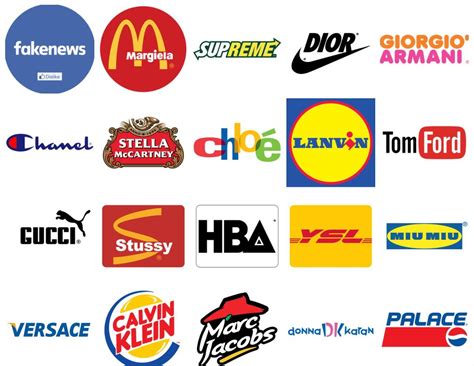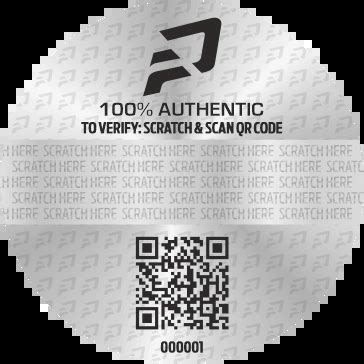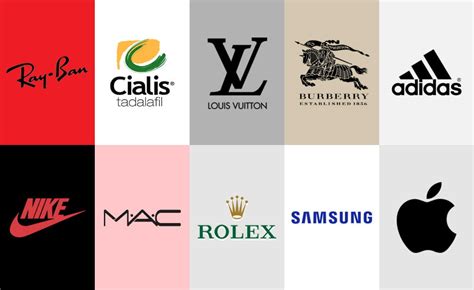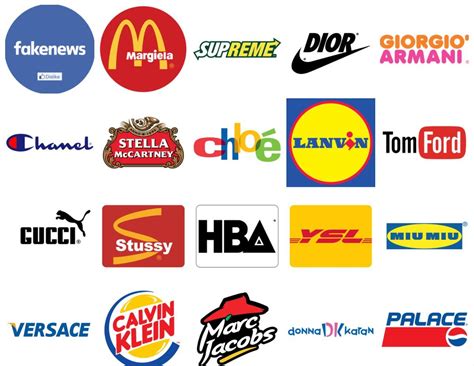How to Spot Unusual Logos on Products: A Comprehensive Guide
1. What are Unusual Logos, and Why Should You Spot Them?
Unusual logos are logos that deviate from the expected design, appearance, or brand recognition, often used in counterfeit products. Recognizing these unusual logos can help consumers avoid counterfeit items, ensure quality, and make informed purchasing decisions.
Spotting unusual logos involves attention to design, color, typography, and sometimes even size. While some counterfeit logos are very similar to the authentic ones, subtle differences often give them away.

Here are some characteristics to watch for:
- Minor spelling errors
- Inconsistent color schemes
- Misshapen logos
- Incorrect placement on the product
2. Common Signs of Counterfeit Logos
To recognize counterfeit logos, it’s essential to understand the differences between genuine and fake logos. Below are some telltale signs that a logo might be counterfeit:
- Color Variation: Counterfeit logos may use colors that are slightly off from the original brand’s trademark colors.
- Font Differences: Authentic logos often have proprietary fonts, while counterfeits may use generic fonts that look similar.
- Misspellings: Common in fake logos, look for subtle errors in the brand name itself.
- Blurry Edges: Many counterfeit logos have low print quality, making the edges look blurred or pixelated.

3. Why Do Companies Change Logos, and How to Differentiate from Fakes?
Brands occasionally update their logos to stay relevant. This makes it challenging to differentiate authentic logo changes from counterfeits.
Here’s how to differentiate:
| Authentic Changes | Counterfeit Logos |
|---|---|
| Announced by brand through official channels | Unannounced or sudden |
| Consistent color and font updates | Inconsistent color or font usage |
4. How to Check Logo Authenticity Before Buying a Product?
Before purchasing, you can take several steps to check the logo’s authenticity:
- Compare with Official Website: Visit the brand’s official website to cross-check the logo.
- Look for Verification Marks: Some brands use holograms or QR codes for authenticity verification.
- Examine Packaging: Counterfeits often lack the quality and attention to detail in packaging.
5. How Are Counterfeit Logos Made, and Why Do They Look So Real?
Many counterfeit manufacturers use advanced printing technologies to mimic logos closely. This practice involves scanning and duplicating high-quality images of original logos, making it difficult to spot a fake at first glance.
These techniques include:
- High-Resolution Printing: Allows for detailed, close replicas
- Color Matching: Fake logos often attempt to match the exact colors used by the original brand.
6. Recognizing Fake Logos on Electronics
Electronics are commonly counterfeited due to their high resale value. Spotting unusual logos on electronics requires attention to:
- Logo Placement: Authentic electronics have a consistent logo placement, often etched onto the product.
- Quality of Print: Poorly printed or blurry logos are a common sign of counterfeit products.
7. How to Report Counterfeit Products with Fake Logos
If you come across a product with a fake logo, reporting it can help prevent others from falling victim to counterfeits.
Steps to report:
- Visit the official brand’s website and look for a counterfeit reporting option.
- Provide information such as product details, purchase location, and seller information.
- Consider contacting local consumer protection agencies.
8. Why Do Certain Brands Experience More Counterfeiting?
Popular brands are often targeted more by counterfeiters because of their market demand. High-end fashion and electronics brands, for example, experience frequent counterfeiting. Here are some common factors:
- Global Demand: Products with global demand are more profitable to counterfeit.
- Exclusive Brand Appeal: Certain logos convey a status symbol, making them more susceptible to counterfeiting.

9. Commonly Counterfeited Products and Their Logo Differences
Some products are more frequently counterfeited, such as:
| Product Category | Authentic Logo Characteristics | Counterfeit Logo Signs |
|---|---|---|
| Designer Bags | High-quality stitching, metal hardware logos | Poor stitching, low-quality metals |
| Watches | Crystal clear engravings, consistent logo placement | Blurred engravings, inconsistently placed logos |
10. Tools and Resources to Verify Logos on Products
There are several tools consumers can use to verify the authenticity of a product logo:
- Authentication Apps: Certain brands provide authentication apps for mobile devices.
- Online Databases: Websites with comprehensive logo databases help consumers compare and verify logos.
- Expert Review Services: For high-value items, some services offer authentication checks.

FAQ
What is a counterfeit logo?
A counterfeit logo is an imitation of a brand’s official logo, used without permission to create fake products that appear genuine.
Why do counterfeit logos look so similar to real ones?
Counterfeiters use advanced technology to replicate logos, making them look very close to authentic logos to deceive consumers.
How can I report a fake logo?
You can report it directly to the brand or through local consumer protection agencies.
Are there tools to identify counterfeit logos?
Yes, many brands provide authentication apps, and some websites offer databases to help verify logos.
Which products are most often counterfeited?
Electronics, designer bags, and high-end watches are among the most frequently counterfeited items.
What should I look for in electronics to spot a counterfeit logo?
Look for poor quality printing, unusual logo placement, and blurry edges.
How do counterfeit logos affect the original brands?
They can harm brand reputation, reduce revenue, and affect consumer trust.


